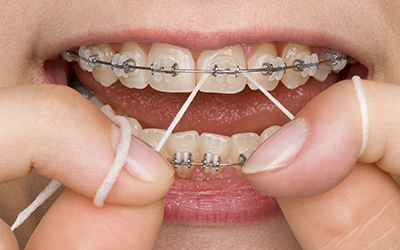Image Credit:
File ID 24427969 | © Christoph Hähnel | Dreamstime.com

Brushing and flossing is an integral aspect of maintaining oral hygiene. Brushing your teeth twice daily, along with flossing, helps keep your teeth and in-between spaces clean and free from any food particles. Regular flossing reduces the risk of cavities and staining and prevents gum diseases, allowing you to maintain a healthy oral cavity.
While flossing is a critical element of good oral hygiene, its significance increases when you have braces, making it a key aspect of pediatric orthodontic care.
Dental braces aid in aligning your smile and solve any other orthodontic concerns. However, the wires and brackets used to accomplish this goal can promote bacterial accumulation and can increase the risk of plaque and gum diseases.
Fortunately, flossing can help you fight bacterial accumulation around your braces and ensure a healthy oral cavity.
Regular flossing with braces can help children prevent gum disease and reduce the risk of cavities and tooth decay, allowing them to maintain a healthy oral cavity.
Flossing can be tricky and time-consuming, but it can become more challenging with braces. However, once you get used to it, flossing doesn’t take much time and effort. Moreover, given the benefits of flossing, it’s totally worth it.
Here’s how to go about flossing your teeth with braces.
If your child has dental braces, make sure they regularly brush and floss their teeth to avoid any other oral health concerns. But if your child has a Greensboro toothache, please reach out to Piedmont Pediatric Dentistry. Our Greensboro dentist would love to address all your pediatric Greensboro dentistry concerns.
Connect today to learn more.